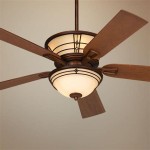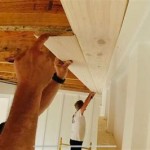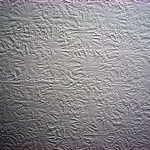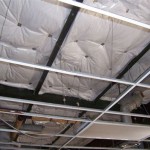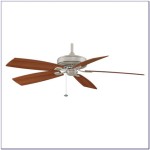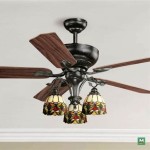Everything You Need To Know About Ceiling Recessed Lighting
Ceiling recessed lighting, also known as downlights, offers a sleek and unobtrusive method of illuminating interior spaces. These fixtures are installed into a ceiling, allowing the light source to be flush with the surface, creating a clean and modern aesthetic. Recessed lighting presents numerous advantages, including energy efficiency, targeted illumination, and space-saving design. Understanding the various aspects of recessed lighting, from its components to installation practices, is crucial for achieving optimal lighting solutions.
Understanding the Components of Recessed Lighting
A typical recessed lighting fixture comprises several key components. These include the housing, the trim, the light bulb (or LED module), and any necessary wiring and mounting hardware. Each component plays a vital role in the overall performance and appearance of the lighting system.
The housing, sometimes referred to as the can, is the main body of the fixture that is installed within the ceiling cavity. Housings are available in various types, each designed for specific installation requirements. Insulation Contact (IC) rated housings are designed to be installed in direct contact with insulation, preventing overheating and fire hazards. Non-IC housings require a minimum clearance from insulation to ensure safe operation. Remodel housings are designed for existing ceilings, featuring spring clips or similar mechanisms for secure installation without requiring access above the ceiling. New construction housings are intended for installation during the construction phase, typically attached to ceiling joists.
The trim is the visible portion of the recessed lighting fixture that sits flush with the ceiling surface. Trims come in a wide variety of styles, finishes, and functions. Baffle trims feature a series of concentric rings that help to reduce glare and provide softer, more diffused light. Reflector trims are designed to maximize light output and are often used for task lighting. Eyeball trims allow the light to be angled and directed towards a specific area, making them suitable for highlighting artwork or architectural features. Gimbal trims are similar to eyeball trims but offer a wider range of adjustability. Decorative trims add an aesthetic element to the fixture, incorporating various colors, patterns, and materials.
The light source is a critical element of the recessed lighting system. Traditionally, incandescent bulbs were used, but due to their energy inefficiency and short lifespan, they have largely been replaced by more efficient alternatives. Halogen bulbs offer a brighter light output than incandescent bulbs but still consume a significant amount of energy. Compact fluorescent lamps (CFLs) are more energy-efficient than halogen bulbs and have a longer lifespan, but they contain mercury and require careful disposal. Light-emitting diodes (LEDs) are the most energy-efficient and long-lasting light source available for recessed lighting. LEDs consume significantly less energy than other types of bulbs and have a lifespan that can exceed 50,000 hours. LED modules can be integrated directly into the fixture or used as replaceable bulbs.
Wiring and mounting hardware are essential for connecting the recessed lighting fixture to the electrical system and securing it within the ceiling. Wiring connectors, wire nuts, and junction boxes are used to ensure safe and reliable electrical connections. Mounting brackets, screws, and clips are used to attach the housing to the ceiling joists or drywall.
Selecting the Right Recessed Lighting for Your Needs
Choosing the appropriate recessed lighting fixtures requires careful consideration of several factors, including the size of the room, the ceiling height, the intended use of the space, and the desired aesthetic. A well-planned lighting design can enhance the functionality and ambiance of any room.
The size of the room is a primary determinant of the number of recessed lighting fixtures needed. Larger rooms will require more fixtures to provide adequate illumination. A general guideline is to space recessed lights approximately two feet apart for every foot of ceiling height. For example, in an 8-foot ceiling, the fixtures should be spaced approximately 16 feet apart. This spacing can be adjusted based on the desired light level and the specific application.
Ceiling height also influences the type of recessed lighting fixture that is appropriate. In low-ceilinged rooms, shallow housings are necessary to ensure that the fixture can be installed without interfering with other ceiling components. In high-ceilinged rooms, higher wattage bulbs or LED modules may be required to provide sufficient light output. Consider the beam angle of the light source as well. A wider beam angle is suitable for general illumination, while a narrower beam angle is better for accent or task lighting.
The intended use of the space is another critical consideration. Kitchens and bathrooms typically require brighter and more focused lighting than living rooms or bedrooms. In kitchens, recessed lights can be used to provide task lighting over countertops and cooking areas. In bathrooms, recessed lights can be used to illuminate the vanity and shower area. In living rooms and bedrooms, dimmer switches can be used to adjust the light level to create a more relaxed and comfortable atmosphere. Consider the color temperature of the light as well. Warmer color temperatures (around 2700-3000K) are generally preferred for living spaces, while cooler color temperatures (around 4000-5000K) are better suited for task-oriented areas.
The desired aesthetic plays a significant role in the selection of recessed lighting fixtures. Choose trims that complement the overall design of the room. Consider the finish of the trim, such as white, black, brushed nickel, or oil-rubbed bronze. Also, think about the shape of the trim, such as round, square, or oval. The trim should blend seamlessly with the ceiling and other architectural elements in the room.
Energy efficiency is an increasingly important factor in lighting design. Opt for LED recessed lighting fixtures, as they consume significantly less energy than traditional incandescent or halogen bulbs. Look for fixtures with the Energy Star label, which indicates that they meet strict energy efficiency standards. Also, consider using dimmer switches to further reduce energy consumption and extend the lifespan of the light bulbs or LED modules.
Installation and Safety Considerations
Proper installation is crucial for the safe and effective operation of recessed lighting fixtures. It is recommended to consult with a qualified electrician to ensure that the installation is performed according to local electrical codes and regulations. Incorrect installation can lead to electrical hazards and potential fire risks.
Before beginning the installation process, turn off the power to the circuit at the circuit breaker. This is a critical safety precaution to prevent electrical shock. Use a voltage tester to verify that the power is off before proceeding with any wiring.
Follow the manufacturer's instructions carefully when installing recessed lighting fixtures. The instructions will provide specific details on how to attach the housing to the ceiling joists or drywall, how to wire the fixture to the electrical system, and how to install the trim. Failure to follow the instructions can result in improper installation and potential safety hazards.
Ensure that the recessed lighting fixtures are properly grounded. Grounding provides a path for stray electrical current to flow back to the electrical panel, preventing electrical shock. Connect the ground wire from the fixture to the ground wire in the electrical box using a wire connector or wire nut.
Use the correct size and type of wiring for the recessed lighting fixtures. The wiring should be rated for the voltage and amperage of the circuit. Overloading the circuit can cause the wiring to overheat and potentially start a fire. Consult with a qualified electrician to determine the appropriate wiring requirements for your installation.
When installing IC-rated recessed lighting fixtures, ensure that they are installed in direct contact with insulation. This will prevent the insulation from overheating and potentially causing a fire. Non-IC housings require a minimum clearance from insulation to ensure safe operation. Check the manufacturer's specifications for the required clearance.
Inspect the recessed lighting fixtures regularly for any signs of damage or wear. Check the wiring for loose connections or frayed insulation. Replace any damaged or worn components immediately to prevent electrical hazards.
Consider using a professional installer. Especially if inexperienced, hiring a professional electrician for recessed lighting installation can ensure the job is done safely, correctly, and in compliance with local electrical codes.
Proper planning and attention to detail are essential for a successful recessed lighting installation. By understanding the various components of recessed lighting, selecting the right fixtures for your needs, and following proper installation practices, a safe, effective, and aesthetically pleasing lighting solution can be achieved.

A Full Guide To Diffe Types Of Recessed Lighting

Faq About Recessed Lighting Sunco

A Full Guide To Diffe Types Of Recessed Lighting

How To Calculate The Number Of Recessed Lights You Need City Sf

What Is Ic Rated Recessed Lighting Benefits Safety And Installation Tips City Lights Sf

Led Recessed Lighting 5 Things To Know Can Lights Downlights

8 Recessed Lighting Installation Tips For Diyers Bob Vila

Top Recessed Lighting Ideas To Transform Your Home

The Trick You Should Know When Planning A Recessed Lighting Layout

How To Install Recessed Lighting A Comprehensive Guide
Related Posts


